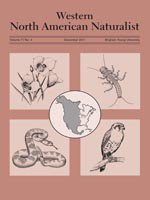One of the fundamental determinants of survival and growth of individuals is population density. Typically, individuals exhibit negative density dependence, but positive density dependence (Allee effect) may occur. Understanding patterns of density dependence is important for conservation and management of species that have low densities as a result of recent population declines. June sucker (Chasmistes liorus) is an endangered species that was formerly abundant but now is found at low densities in Utah Lake. We tested the hypothesis that young June sucker exhibit positive density dependence (i.e., Allee effects) in growth and survival at low densities. In addition, we tested the hypothesis that patterns of density dependence in growth and survival of young June sucker are consistent across years. We conducted a series of 5 experiments in 5 separate years. All 5 experiments included similar levels of density manipulations of young June sucker. June sucker exhibited Allee effects in both growth and survival in some years, but patterns of density dependence varied widely among years. Growth exhibited consistent patterns of negative density dependence, especially at higher densities. Survival was less affected by density, exhibiting no response to density in about half of the experimental comparisons. Overall, intermediate densities around 50 individuals · m-2 seemed to provide the best tradeoff between growth and number produced.
How to translate text using browser tools
1 December 2011
Effect of Density on Growth and Survival of Young June Sucker
Mark C. Belk,
R. Cary Tuckfield
ACCESS THE FULL ARTICLE






